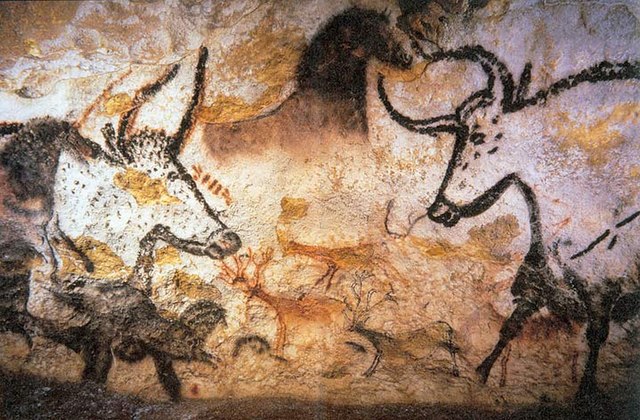Modern humans evolved in Africa around 300,000 years ago and initially lived as hunter-gatherers. They migrated out of Africa during the Last Glacial Period and had populated most of the Earth by the time the Ice Age ended 12,000 years ago.
"Lucy", the first Australopithecus afarensis skeleton found. Lucy was only 1.06 m (3 ft 6 in) tall.
Cave paintings, Lascaux, France, c. 17,000 BCE
Venus figurine, Germany, c. 37,500 BCE
A pillar at Göbekli Tepe
A hunter-gatherer or forager is a human living in a community, or according to an ancestrally derived lifestyle, in which most or all food is obtained by foraging, that is, by gathering food from local naturally occurring sources, especially edible wild plants but also insects, fungi, honey, bird eggs, or anything safe to eat, and/or by hunting game. This is a common practice among most vertebrates that are omnivores. Hunter-gatherer societies stand in contrast to the more sedentary agricultural societies, which rely mainly on cultivating crops and raising domesticated animals for food production, although the boundaries between the two ways of living are not completely distinct.
Pygmy hunter-gatherers in the Congo Basin in August 2014
The Mal'ta-Buret' people in the Baikal region of Siberia lived in dwellings built of mammoth bones, similar to those found in Upper Paleolithic Western Eurasia.
A San man in the Kalahari Desert in South Africa. Many San still live as hunter-gatherers.
Bison hunt under the wolf-skin mask, George Catlin, c. 1832








